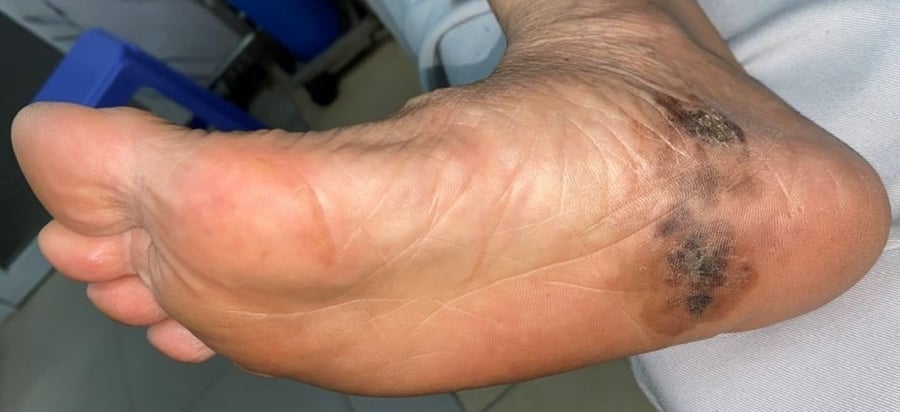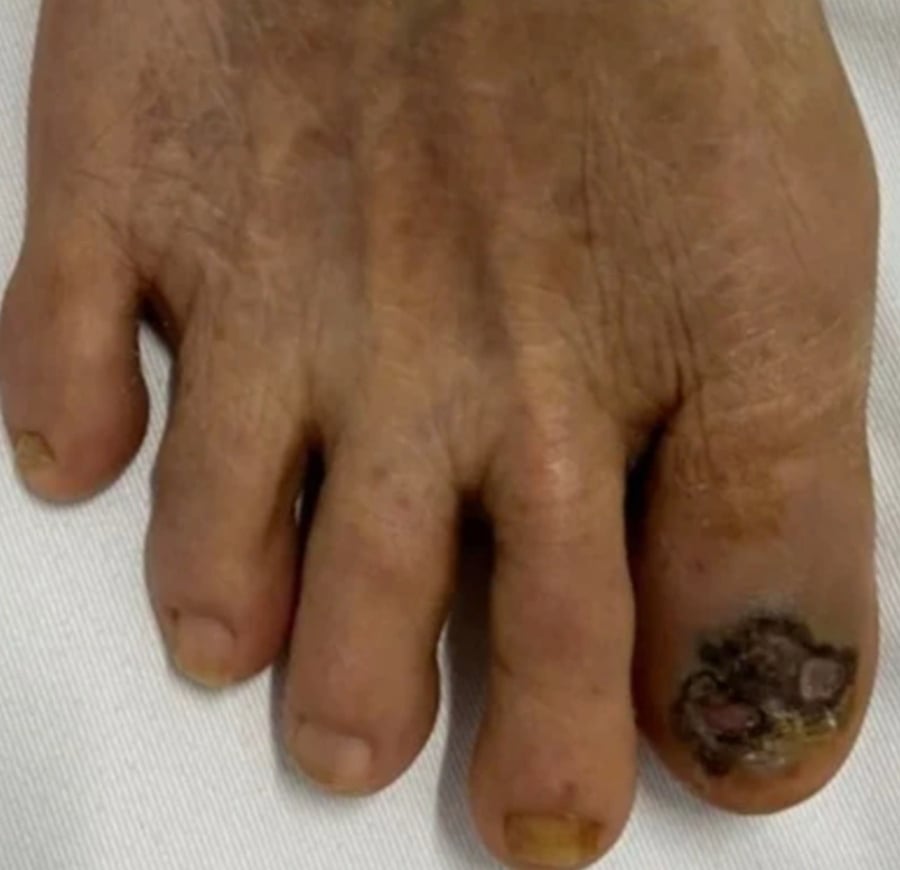## Warning Signs of Skin Cancer: Don’t Ignore Those Spots
Be Vigilant About Unusual Spots on Your Skin
On August 1st, the Central Dermatology Hospital reported an increase in patients presenting with dark pigmented patches on their hands and feet. These patients have been diagnosed with melanoma, a serious form of skin cancer.
Ms. Vu Nguyen Binh, a surgeon at the Department of Plastic and Reconstructive Surgery and Functional Rehabilitation, shared that most patients had lived with these unusual spots on their skin for years without seeking medical attention due to negligence.

Take the case of 74-year-old patient N.V.T. as an example. He had a black spot near his right heel for years, but since it wasn’t itchy or painful, he didn’t pay much attention to it.
Over time, however, the spot not only failed to disappear but also grew larger and changed shape, with an uneven surface. It was only when he happened to read an article about skin cancer with similar descriptions that he decided to seek medical help.
The diagnosis revealed melanoma on the sole of his right foot.
Fortunately, further tests, including X-rays, ultrasounds, and lymph node examinations during surgery, showed no signs of metastasis, as explained by Dr. Binh.
“The patient underwent surgery to remove the cancerous lesion, and a pathological examination was performed to determine the invasion depth and stage of the cancer, guiding further treatment,” Dr. Binh added.
5 Distinctive Signs of Melanoma
According to Dr. Vu Nguyen Binh, melanoma arises from melanocytes, the cells responsible for producing melanin, our skin’s natural pigment.
Melanoma incidence is on the rise. In 2023, an estimated 97,610 new cases of melanoma are expected to be diagnosed in the US, resulting in approximately 7,990 deaths. Statistics from several countries show that the incidence of this disease has doubled in the last 10-15 years and also increases with age.
The highest incidence rate is in Australia, with 40 cases per 100,000 people, followed by the US with 12 cases per 100,000, and Vietnam with 0.4 cases per 100,000.

Melanoma can appear anywhere on the body, but in Asians, it commonly affects the palms and soles, accounting for about 50% of cases.
Dr. Binh mentioned that most of her patients initially presented with pigmented skin lesions that were multicolored, usually brown interspersed with black-gray, and lacked clear boundaries. These lesions would then spread, sometimes ulcerating or forming raised masses.
Many experts believe that moles on the hands, feet, and shaved areas are at high risk of transforming into melanoma, recommending their early removal.
Additionally, melanoma can develop under the nail, presenting as unevenly pigmented areas that may involve part or the entire nail bed. However, melanoma under the nail is often diagnosed late because it can be mistaken for other conditions such as subungual nevi, post-traumatic hemorrhage, paronychia, onychomycosis, or subungual verruca.
Therefore, any pigmented lesion under the nail should be carefully examined, especially if it involves the entire length of the nail.
To recognize the early signs of melanoma, patients can use the ABCDE rule to check for abnormal lesions on their bodies:
A (Asymmetry): The mole or pigmented area is asymmetrical.
B (Border): The lesion’s border is irregular, notched, or blurred.
C (Color): The color is uneven and may include various shades of black, brown, red, or blue.
D (Diameter): The lesion is larger than 6 mm in diameter.
E (Evolution): The lesion changes in size, shape, or color over time.
If a lesion displays any of these characteristics, it is crucial to seek immediate medical attention at a specialized hospital.
Melanoma is the leading cause of death among skin cancers due to its aggressive nature and rapid metastasis.
“Melanoma invades and spreads through tissues, blood, and the lymphatic system to other organs, most commonly the brain, lungs, and liver,” explained Dr. Binh. While the disease has a high metastasis rate, early detection and proper treatment can lead to a high five-year survival rate.
According to data from the US Joint Committee on Cancer in 2009, the prognosis for melanoma in situ is very favorable, with a five-year survival rate exceeding 90%. For more invasive tumors, the five-year survival rate ranges from 50-90%, depending on the tumor’s thickness, ulceration, and cell division rate. When the cancer has spread to the regional lymph nodes, the five-year survival rate drops to 20-70%. For distant metastases, the five-year survival rate is only about 10%.






































